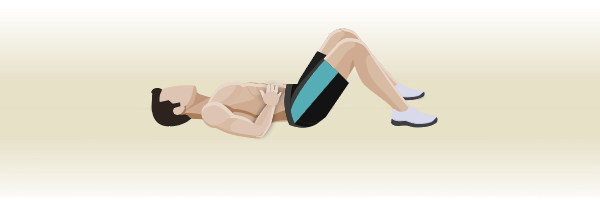
Use Breath to Improve Core Stability
When your participants ask about their core muscles, they’re most likely referring to the lauded “six-pack.” As a fitness instructor, you may think about transversus abdominis, obliques and pelvic-floor muscles. But almost everyone tends to forget about the diaphragm.
The diaphragm’s two main functions involve breathing and biomechanics. It’s one of the most important muscles for maintaining intra-abdominal pressure (Nelson 2012). An inability to regulate intra-abdominal pressure may result in poor motor control and lack of spinal stability. When the diaphragm is not properly engaged, other muscles must compensate, which increases the risk of injury (something you and your attendees want to avoid).
The spine is like a sailboat’s mast, which must take pressure from the sails to create movement. If the mast lacks support and is wobbly, the boat won’t go far. Similarly, if the core muscles can’t maintain internal pressure and the spine loses stability, movement suffers.
Core muscles don’t move heavy weight; they stabilize the spine while other muscles move load. Put another way, intra-abdominal pressure is like a weight belt applied from the inside. A proper core-training program should teach participants how to maintain a neutral spine while breathing and moving the extremities.
How do you teach this? To activate the diaphragm, it’s important to breathe properly. Dysfunctional or limited breathing is more common than you think! It’s likely that inhibited breathing, caused by poor posture and bad habits, is limiting performance in many of your participants. Therefore, learning proper breathing is the first step toward getting a stronger core—just take a few minutes during class to introduce the concept.
The following exercises can be done in sequence as part of a warmup to a “regular” core section or workout. First practice them yourself. If participants can’t perform the third move properly, regress and focus on the first two.
Breath Awareness
The first exercise helps you become aware of the breath:
- Lie flat on your back, knees bent, feet on floor.
- Put one hand on your chest and the other on your belly, below the ribs.
- Take a deep breath as the hand on your belly rises. The hand on your chest stays stable.
- Inhale for 3–4 seconds and exhale for 6–8 seconds. Feel the lower ribs expand—this is the diaphragm contracting.
- Practice until the breath flows smoothly in and out.
Abdominal Brace
The next step is to brace the abdominals as you breathe:
- Inhale as in the first exercise.
- As you exhale, bring the lower ribs in a little and brace the core.
- Hold the contraction as you inhale and exhale. The inhalation will be limited; that’s normal.
- The goal is to get used to the breath’s movement without losing intra-abdominal pressure.
For another exercise and references, see “Breath and Movement for Core Stability” from the June 2019 print edition of Fitness Journal. If you cannot access the full article and would like to, please contact the IDEA Inspired Service Team at 800-999-4332, ext. 7.

